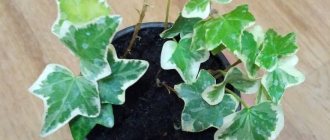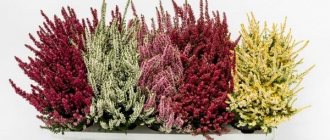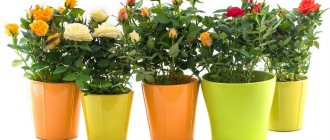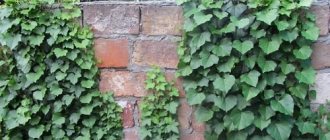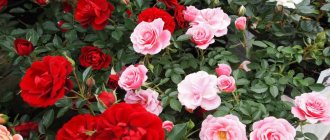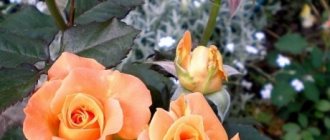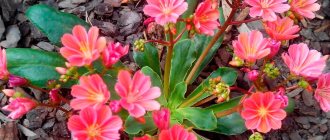Optimal conditions for growing indoor ivy
The perennial climbing hedera has a huge number of varieties and varieties, which differ in the shape and color of the leaves.
They can be variegated, spotted, corrugated, smooth, yellow, or with patterns. This is the main decoration of indoor ivy. It does not bloom at home, so it pleases its owners exclusively with evergreen shoots. It is impossible to force the hedera to produce yellow-green inflorescences, even by providing it with ideal care.
Most popular as a houseplant are different forms of the “common ivy” variety. When choosing a place for the culture in the apartment, pay attention: it grows quietly not only where there is sun, but also in the shade. Therefore, the flowerpot can be placed not only on the window, but also in the back of the room - for example, on a closet. The shoots descending from above will be an excellent decorative addition to the interior.
16 excellent varieties of plums for the Moscow region
Attention! Shade tolerance is characteristic only of varieties with green leaves. Variegated varieties need diffused sunlight, otherwise they lose their unusual color and become monochromatic.
Dry and hot air is not suitable for ivy. Therefore, in the room where the pot with the plant is located, you need to maintain a suitable microclimate: +22...24C in summer and from +13C in winter. The room should be ventilated periodically. It is not necessary to hide the evergreen vine, since it is indifferent to drafts and temperature changes. In summer, you can safely put ivy on the balcony or take it out into the yard.
Characteristics of the variety and types of home ivy with a description
The root system is developed, superficial. The stems are creeping and prone to branching. They contain brushes of aerial roots, with the help of which the ivy is attached to the support. In adult plants, the stems become woody. They can reach up to 15-20 m in length.
The leaves are simple, alternate, lobed. The texture is leathery. The surface of the plates is smooth and glossy. Most species have a dark green color with a light skeleton of veins. There are a small number of variegated species.
Indoor ivy
Small yellow-green flowers are collected in inflorescences. At home, it is almost impossible to achieve ivy flowering. But if a miracle happens and the plant blooms, experts recommend getting rid of the inflorescences. Not only are the flowers and berries of heder poisonous, they also emit a very specific smell.
To date, more than 100 species of this plant are known. There are not so many common types of indoor ivy; each of them has decorative value.
Types of ivy
Common ivy, shown in the photo, is the most popular species in indoor floriculture. The following varieties are especially interesting:
- Hummingbird is a miniature flower with white-green leaves.
- Eva and Mona Lisa are distinguished by almost yellow leaves.
- Jubilee - ivy with spotted leaves.
- Ivalace is distinguished by corrugated sheets.
- Harald has almost round leaves.
Ivy
The Colchis species is represented by the following hybrids:
- Dentata Variegata is characterized by oval leaves with pale yellow edges.
- Salfer Hard is distinguished by curled light green leaves with yellow-green veins.
- Tree-like has drooping shoots with oval leaves.
Flower care at home
Planting and transplanting . A universal substrate is quite suitable for indoor ivy. You can prepare the soil yourself by mixing soil with sand, peat and compost. The frequency of transplants depends on the age of the plant:
- young vines need to change their “place of residence” no more than once a year, usually if they stop growing or their roots are visible in the drain hole of the flowerpot;
- middle-aged headers require replanting every 2 years;
- adult crops can grow for several years in one pot, but they need to periodically change the top layer of soil.
Watering . Ivy loves water, so it prefers regular irrigation. But it will also survive short-term drought, and all because for hedera, waterlogging of the roots is more dangerous than drying out. If ivy grows in a cold room, it is enough to ensure that the top layer of soil remains moist. The same is true for the summer period. In winter, the soil surface should dry out a little.
Application of fertilizers . The evergreen vine needs regular fertilization with complexes for decorative deciduous crops. During spring and summer, ivy should be fed 2-3 times a month; in autumn and winter, once a month is sufficient.
How to care for ivy?
The plant will be grateful for following simple rules for its maintenance:
- Lighting. Satisfied with a minimum amount of light. Any shaded corner of the room will do, but a plant with variegated leaves needs more light or the leaves will turn their normal green color.
- Humidity. In the summer, water generously and arrange a shower; in the cold season, lightly moisten the earthen ball in a state of complete drying.
- Temperature. Ivy is resistant to drafts and temperature changes, calmly tolerates both a decrease of up to ten degrees and an increase of over thirty.
- The soil. It feels good in a fairly tight pot with a light substrate, where there is room for sand and peat, humus and turf. It is better to plant in early spring.
- Reproduction. Cuttings are cut off at the tops of long stems, rooted in a container of water and planted several at a time for maximum density.
Read also: Doshab mulberry medicinal properties and contraindications
What to do if the plant dries out, turns pale or yellow
Sometimes failure to comply with the rules for growing ivy leads to the fact that the climbing perennial loses its attractiveness, stops developing, and sheds its leaves. To know exactly what errors in care have worsened the condition of the hedera, you need to understand the signals that the plant gives to its owner:
The leaves began to fall . There may be several reasons:
- the indoor air is too dry;
- the plant does not have enough light. Despite its shade tolerance, ivy sometimes needs to be recharged with solar energy;
- age of the liana. Mature crops sometimes shed their leaves, requiring rejuvenation. It is necessary to cut off bare shoots, stimulating the appearance of new lashes.
Variegated varieties become pale , expressionless, and lose color. This is influenced by:
- light deficiency;
- small pot volume. In cramped conditions and not offended - this is not about ivy. Its surface roots require a wide rather than a deep container.
The leaves that appear are at a great distance from each other. They are smaller than usual. There are two main reasons:
- lack of lighting;
- The air temperature in the room is too high.
The plant turns yellow . This is due to:
- excess moisture;
- oversaturation with fertilizers.
The leaves are drying up . This is due to:
- hot and dry air;
- insufficient watering;
- spider mite lesions. In this case, rinse the lashes in a container of water and treat them with an insecticide - for example, Actellik.
Although indoor hedera is not considered a capricious plant, which even an inexperienced gardener can grow, it is still necessary to take care of it. After all, only proper care can turn simple ivy into a gorgeous flower with lush greenery.
Ivy leaves are drying, what should I do?
I had the same situation. It's definitely not a tick. The plants grew well for 2 months and the same thing started happening, nothing helped. Died. When I took the cuttings just starting to dry out like this, the cuttings also died. So the plant will die, write if it survives. I had two of them, one the same and the other a helix hummingbird (with a white border). Other plants were not infected from them. Where did you buy them? I'm at OBI.
This happens very often with this ivy, I have already sworn off getting it. So it's not just your problem. The only thing left is to cut it into a stump and water it very sparingly in winter. Perhaps in the spring it will produce new shoots.
I would cut off all living branches for rooting. And what remains, you can, of course, leave and see what happens, just check the roots first. Plant fresh branches in another soil and pot.
Ivy leaves dry out, turn brown and die - if the room temperature is too high, if the air humidity is low, if there is insufficient watering, or if watering is irregular, as well as if it is infested with spider mites. You need to check for pests; the condition of the ivy like yours indicates a mite. Dry indoor air promotes the appearance of pests. If pests are detected, the plant must be treated with an insecticide. Treatment with actellik (1-2 ml per liter of water), as well as karbofos, actara, etc., gives good results against pests. Spraying must be carried out very carefully so that the solution gets under each leaf, otherwise after a while the pest will multiply again. Instead of spraying, you can rinse all the ivy foliage in a basin with insecticide.
How can ivy surprise us?
In addition to its undoubted aesthetic value, ivy has many useful properties and qualities. It has been proven that this plant not only efficiently purifies the air in the room where it grows, but also helps strengthen people’s immunity and helps cope with stressful situations. There is an opinion that hanging plants do not contribute in any way to the prosperity of family happiness; cases are listed when ivy survived from its owner’s house, making the owner lonely, but this version has no scientific confirmation.
The medicinal properties of indoor ivy are known, although there are not many of them, but a decoction of ivy leaves will soothe headaches and coughs, rheumatic and arthritic pains, and a tincture of ivy roots can successfully cope with burns and boils on the skin. As part of the herbal mixture, ivy expels stones from the kidneys and bladder.
Add a comment Cancel reply
You must be logged in to post a comment.
Common ivy or (Hedera lat.) is an evergreen shrub. There are more than 100 forms and varieties.
Thanks to the presence of sucker roots, the plant, clinging to any support, is able to cover various surfaces with a bright green mass: walls, arches, ceilings, columns.
The plant is distinguished by a variety of colors and leaf shapes and is rightfully a decorative addition to any room and is used for landscape design.
Indoor ivy diseases and their treatment
Ivy is not demanding, so caring for it is not particularly difficult for gardeners.
It is only necessary to maintain comfortable conditions for the healthy growth and development of the flower.
Why does ivy dry out? What to do if this happens? You will find the answers below.
Violation of these conditions can lead to various chedera diseases. It is advisable to know the reasons why your green pet suddenly begins to turn yellow and wither:
Ivy leaves are drying, what can I do to help?
- heat, dry indoor air. Why do ivy leaves dry out and fall off? The answer is simple. Ivy does not like heat; a comfortable temperature for it is 18-22 degrees. In the warm season (spring, summer), the flower must be regularly sprayed with well-settled water and placed in a cooler place. In winter, it is advisable to keep ivy away from central heating radiators. The flower is not afraid of drafts, so a place near a balcony door or window is favorable for it;
- lack of moisture. Hedera needs regular watering. Watering should be moderate, the soil in the pot should be moist, but do not turn the soil into a swamp. The root system of ivy is superficial; too much water can lead to rotting of the roots;
- pest damage , in this case spider mites.
Pests and their control
Excessively dry indoor air and insufficient watering (prolonged drought) weaken the plant’s immunity and lead to the appearance of parasites. Hedera is “adored” by spider mites, scale insects and aphids.
- spider mite It spreads very quickly. Signs of damage are visible to the naked eye: the ivy is entangled in thin white cobwebs, the leaves dry out and fall off;
- scale insect Its waxy plaques can be seen on the inside of the leaves. The plant slows down in growth, the leaves turn yellow and fall off;
- aphid. It reproduces very quickly. It lives on the flower in whole colonies. Capable of completely sucking the juice from the stem and leaves of the plant. Ivy turns yellow and withers.
At home, you can deal with pests using a solution of any insecticidal agent (Karbofos) or a solution of ordinary laundry soap (dishwashing detergent is also suitable).
In the first case, the plant is thoroughly sprayed, not leaving a single leaf unattended, and after a week the procedure is repeated.
In the second case. A soap solution is less harmful to the plant, so the treatment procedure can be carried out 2-3 times a week. The plant is thoroughly sprayed and placed under a plastic bag for an hour, after which it is rinsed with warm water.
Ivy propagation
Fittonia mix - home care
Growing ivy from seeds is not that difficult. The process is carried out by planting seedlings, which are then transplanted into separate containers.
Cut cuttings
In addition to the seed method, others are used:
- cuttings;
- rooting of cuttings.
Cuttings can be taken from early spring to mid-summer, and propagated by layering only in spring.
Ivy propagation, depending on the method, occurs as follows:
- seeds. It is better to plant them at the end of winter. To do this, you need to prepare a nutrient substrate or purchase it ready-made. Pour it into the container to fill 2/3 of its entire volume. Bury each seed 2-3 cm and water the soil. Cover the top of the box with film and place it in a lighted place;
- cuttings. Cut several cuttings 14-16 cm long from healthy shoots and remove the lower leaves. Plant them in a box with substrate and water thoroughly. Cover the top with a plastic container;
- layering. Place the pot with the bush on some surface. Place another box with substrate nearby and dig a side shoot of the hedera into it. Carefully secure the layering, leaving its top 10-15 cm above the ground. The seedlings need to be replanted after rooting, having previously separated them from the main bush.
